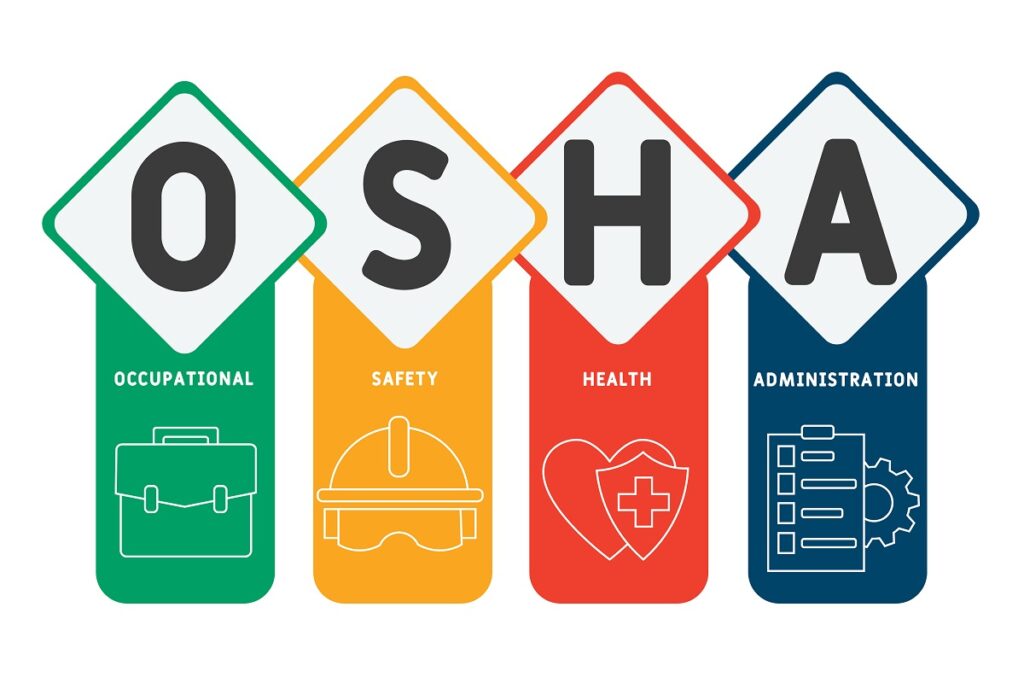
The roofing industry is one of the most heavily regulated construction sectors in terms of worker safety, and for good reason. Falls, heat exposure, and equipment mishandling remain leading causes of injury and death on job sites.
In 2025, the Occupational Safety and Health Administration (OSHA) will introduce new updates and enforcement priorities that roofing professionals should be aware of. Staying compliant isn’t just about avoiding fines; it’s about protecting your crew and your company’s reputation.
1. Enhanced Fall Protection Standards
Falls from elevation continue to be the #1 cause of roofing fatalities. In 2025, OSHA has increased enforcement on:
- Tie-off points and lifeline inspections — Crews must verify and document anchor point strength before use.
- Warning line systems — Must be set at least 15 feet from edges on low-slope roofs, with visible flags every 6 feet.
- Guardrail use on flat roofs — More stringent guidelines now apply for temporary and permanent guardrail systems.
Tip: Keep daily inspection logs. OSHA inspectors are now asking for proof of anchor and harness checks.
2. Heat Illness Prevention Rule
OSHA is finalizing its Heat Injury and Illness Prevention Standard, which targets high-heat states and the summer months. Key points:
- Mandatory water, rest, and shade breaks for crews in hot weather.
- Written heat illness prevention plans must be in place.
- Supervisors must be trained to recognize the symptoms of heat stroke and dehydration.
3. Stricter Ladder Safety
- Extension ladders must now be secured at both top and bottom points when possible.
- Inspections are required before each use, and damaged ladders must be tagged and removed from service immediately.
- New guidance stresses three points of contact during ascent and descent.
4. Increased Fines for Violations
OSHA penalties have been adjusted for inflation:
- Serious & other-than-serious violations: up to $16,131 per violation.
- Willful or repeat violations: up to $161,323 per violation.
Given that multiple violations can accumulate, a single inspection can cost a contractor tens of thousands of dollars.
5. Digital Recordkeeping & Reporting
OSHA is encouraging digital submission of:
- Accident and incident reports.
- Safety meeting records.
- Equipment inspection logs.
Contractors who can quickly produce digital records during an inspection will face shorter audit times and reduced disruption.
How Pitch Gauge Helps Roofing Contractors Stay OSHA-Compliant
While Pitch Gauge is best known for its fast, accurate roof and wall measurements, it also plays a role in improving safety:
- Ladderless measurements mean fewer trips to the roof, reducing fall risk.
- Accurate material calculations prevent excessive rooftop clutter, which can be a tripping hazard.
- Digital job records (photos, measurements, and notes) are stored in-app, making it easier to document safe practices and provide evidence during an OSHA inspection.
By integrating tools like Pitch Gauge into your workflow, you’re not just improving efficiency—you’re actively lowering risk and supporting OSHA compliance.
Action Steps for Roofing Pros in 2025
- Update your safety manual to reflect new OSHA guidelines.
- Train your crews on fall protection, heat safety, and ladder use before peak season.
- Digitize your records so they’re ready for inspection.
- Incorporate technology, such as a Pitch Gauge, to reduce hazardous tasks.
- Schedule regular safety audits to identify and correct violations before OSHA does.
In conclusion, in 2025, roofing safety isn’t just about gear; it’s about culture, compliance, and innovative processes. The contractors who lead on safety will win the trust of their crews, clients, and regulators.
Have you already updated your safety plan to reflect the 2025 OSHA updates? What changes have made the most significant difference for your team? Share your tips in the comments so other roofing pros can benefit.